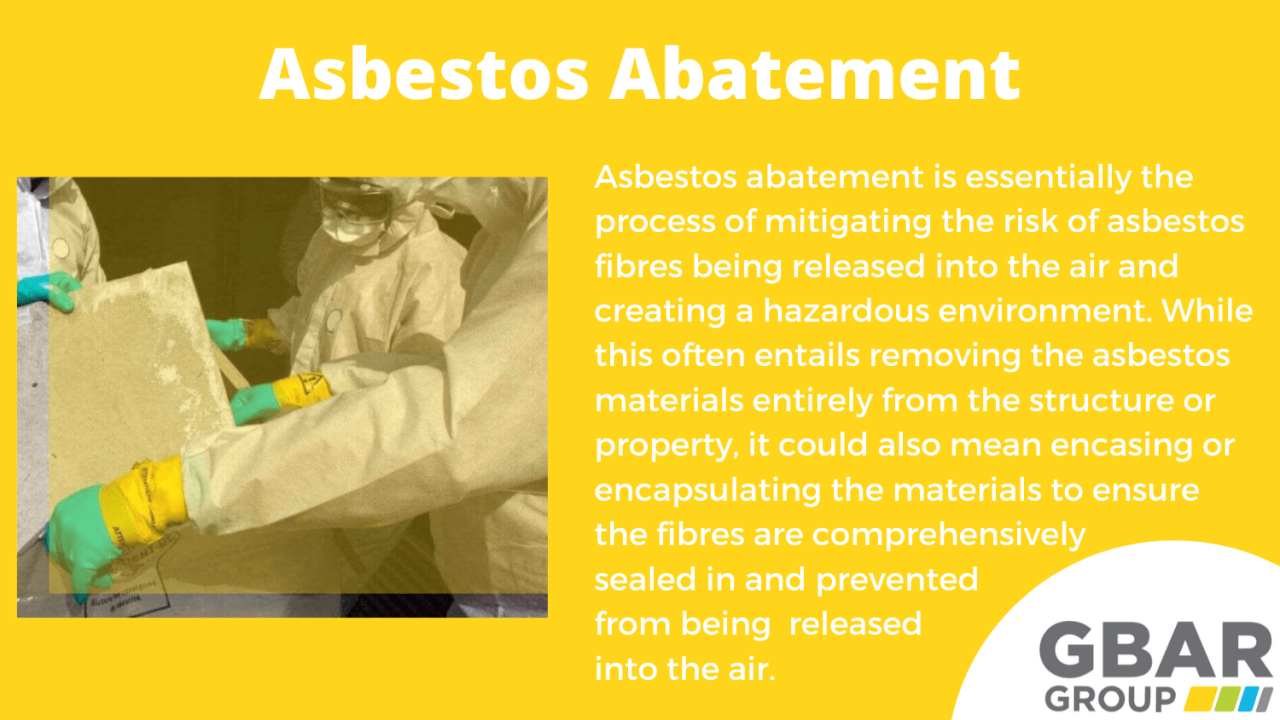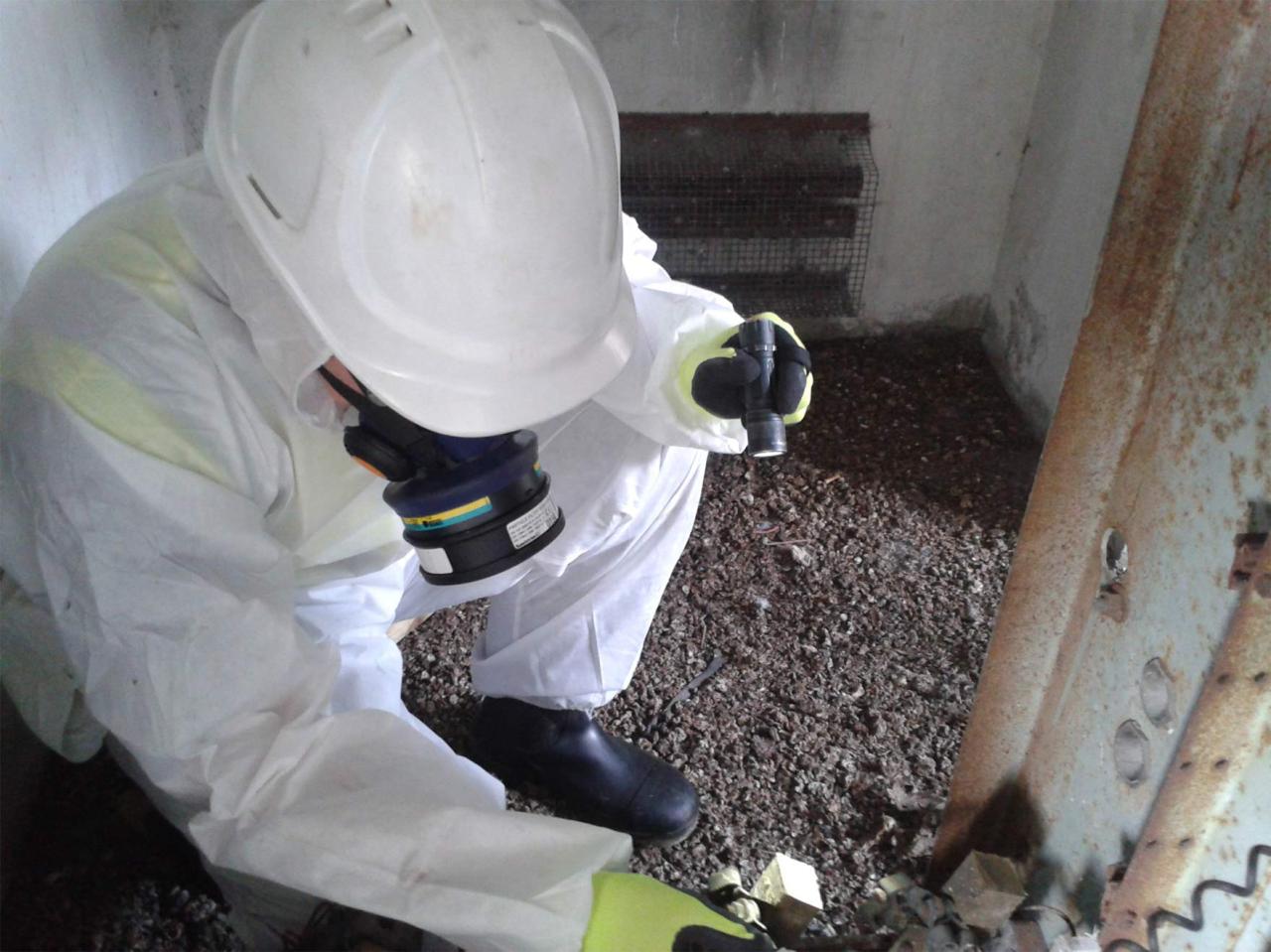Asbestos remediation is a crucial topic that warrants urgent attention, given the grave health risks associated with asbestos exposure. From lung diseases to cancer, the impact of asbestos can be devastating, making it imperative to address this silent danger lurking in many older properties. Beyond the health hazards, legal requirements across various regions compel property owners to engage in proper remediation practices to avoid hefty penalties. Economically, neglecting asbestos issues can lead to increased liabilities and potential losses, underscoring the necessity for effective management.
Understanding the various remediation methods is paramount, as they range from encapsulation to complete removal, each with its own set of protocols and safety measures. In this discussion, we will navigate through the nuances of the asbestos remediation process, offering insights into best practices and essential safety guidelines to ensure successful outcomes.
Importance of Asbestos Remediation

Asbestos remediation is a critical process aimed at managing and eliminating the hazardous material known as asbestos from buildings and environments. The significance of this undertaking cannot be overstated, as the health risks associated with asbestos exposure remain a pressing concern. Furthermore, various legal requirements govern asbestos remediation, reflecting the seriousness with which different regions address this issue. Failing to effectively remediate asbestos can also have far-reaching economic implications.
Health Risks Associated with Asbestos Exposure
Exposure to asbestos is linked to severe health conditions, including asbestosis, lung cancer, and mesothelioma. These diseases develop due to the inhalation of asbestos fibres, which can become airborne when the material is disturbed. The latency period for these conditions can span several decades, meaning symptoms may not manifest until years after exposure. According to the Health and Safety Executive (HSE), approximately 5,000 deaths per year are attributed to asbestos-related diseases in the UK alone. This statistic underscores the urgency for effective remediation strategies to protect public health.
Legal Requirements for Asbestos Remediation
The legal framework surrounding asbestos remediation varies by region, but generally, regulations require strict adherence to safety standards. In the UK, the Control of Asbestos Regulations 2012 mandates that duty holders must manage asbestos in non-domestic properties effectively. This involves conducting risk assessments, notifying the relevant authorities, and ensuring that licensed contractors perform any necessary remediation work. Failure to comply with these regulations can result in substantial fines and legal action, highlighting the necessity for thorough understanding and execution of remediation processes.
Economic Implications of Failing to Remediate Asbestos
Neglecting asbestos remediation poses significant economic risks, not only in terms of potential health liabilities but also property value depreciation. Properties containing asbestos may face decreased marketability, impacting their valuation and the owner’s financial investment. Additionally, the costs associated with emergency remediation efforts, should asbestos be discovered after a property has been sold, can be exorbitant. A study by the Royal Institution of Chartered Surveyors (RICS) indicated that properties with known asbestos issues can lose up to 30% of their market value. Therefore, proactive remediation is not only a health imperative but also a financial necessity.
Asbestos Remediation Methods
Asbestos remediation encompasses a variety of techniques aimed at managing and mitigating the dangers posed by asbestos-containing materials (ACMs). The choice of method largely depends on the condition of the asbestos, its location, and the potential risk it poses to health. Understanding these methods is essential for ensuring safe environments, particularly in older buildings where asbestos may have been used extensively.
Overview of Asbestos Remediation Techniques
The primary methods for asbestos remediation include encapsulation, removal, and enclosure. Each technique has its unique applications and effectiveness depending on various factors, such as the integrity of the ACMs and the building environment.
- Encapsulation: This method involves applying a sealant over ACMs to prevent fibres from becoming airborne. It is often chosen for materials in good condition, as it can be less disruptive and more cost-effective than removal.
- Removal: Complete removal of ACMs is typically the most effective way to eliminate asbestos hazards. This process is invasive and usually reserved for severely damaged materials or when extensive renovations are planned.
- Enclosure: Enclosure involves constructing a barrier around the ACMs to contain any potential release of fibres. This method is useful when removal is not feasible and is often used in conjunction with regular inspections.
Effectiveness of Encapsulation versus Removal
The effectiveness of encapsulation compared to removal depends significantly on the condition of the ACMs and the long-term management plan.
Encapsulation can be highly effective if the asbestos is intact and poses minimal risk. However, its efficacy relies on the ongoing maintenance of the encapsulating materials.
In contrast, removal is definitive, eliminating the risk entirely but comes with higher costs and potential exposure risks during the removal process. Factors influencing the choice between encapsulation and removal include:
- Condition of the ACMs: Intact materials are often candidates for encapsulation, while damaged materials necessitate removal.
- Future building plans: If extensive renovations are planned, removal may be the preferred option.
- Cost considerations: Encapsulation may be less expensive initially but requires future maintenance, whereas removal might be a higher upfront cost but offers a permanent solution.
Safety Protocols During Remediation
Safety protocols are paramount during any asbestos remediation project to protect both workers and occupants. These protocols should encompass a range of measures:
- Personal Protective Equipment (PPE): Workers must don appropriate PPE, including respirators, disposable coveralls, gloves, and eye protection.
- Air Monitoring: Continuous air quality monitoring should be conducted to detect any airborne asbestos fibres during the remediation process.
- Containment Procedures: Establishing controlled areas through the use of plastic sheeting and negative air pressure systems is crucial to prevent the spread of asbestos fibres.
- Waste Disposal: All asbestos waste must be securely packaged and disposed of in accordance with regulations, typically in designated landfill sites specifically for hazardous materials.
Implementing these safety protocols not only ensures compliance with legal requirements but also significantly minimises health risks associated with asbestos exposure.
Asbestos Remediation Process
The asbestos remediation process is a critical undertaking aimed at ensuring safe environments, particularly in residential properties that may contain asbestos. The following sections will detail the step-by-step procedures involved in conducting a thorough asbestos inspection, the methodologies for safely removing asbestos, and a checklist for post-remediation testing and verification.
Asbestos Inspection Procedure
An asbestos inspection is the first and foremost step in the remediation process, crucial for identifying the presence of asbestos-containing materials (ACMs). The inspection typically involves the following steps:
- Engage a qualified asbestos professional to conduct the inspection.
- Visual assessment of the property, focusing on areas likely to contain ACMs such as roofing, insulation, and flooring.
- Sampling of suspect materials, which involves carefully collecting samples for laboratory analysis.
- Laboratory testing of samples to determine the presence and type of asbestos.
- Preparation of a comprehensive inspection report that Artikels findings and recommendations for remediation.
Asbestos Removal Procedures
The safe removal of asbestos is paramount to mitigate health risks associated with asbestos exposure. The removal process comprises several meticulously structured steps, which must be adhered to by certified professionals to ensure safety and compliance with regulatory guidelines.
“Proper personal protective equipment (PPE) and containment practices are essential to prevent asbestos fibre release.”
The removal procedures include:
- Setting up a containment area to prevent the spread of asbestos fibres, including sealing off the work area with plastic sheeting.
- Utilising specialized air filtration systems (HEPA filters) within the containment area to ensure air quality is maintained.
- Carefully removing asbestos materials while minimising dust generation, using wet methods where feasible.
- Disposing of asbestos waste in accordance with local regulations, ensuring it is transported to an approved disposal facility.
- Cleaning the work area thoroughly to eliminate any residual contamination.
Post-Remediation Testing and Verification Checklist
Post-remediation testing is vital to confirm that the asbestos removal has been successful and that the environment is safe for re-occupation. A structured checklist for verification involves several key points:
“Confirmation of safety through rigorous testing ensures the integrity of the remediation process.”
The checklist includes:
- Visual inspection of the remediation site to identify any visible asbestos debris.
- Air quality testing using calibrated sampling equipment to measure airborne asbestos levels.
- Documentation of all testing results and comparison against regulatory limits.
- Verification by a qualified third-party inspector to ensure compliance with safety standards.
- Issuance of a clearance certificate confirming the area is safe for occupancy.
Best Practices in Asbestos Remediation

Asbestos remediation is a critical process aimed at safeguarding health and maintaining property integrity. Proper practices ensure the effectiveness and safety of the remediation effort, leading to a successful outcome. This segment Artikels the best practices in managing asbestos, from the importance of professional involvement to essential preparatory steps for property owners.
Importance of Hiring Certified Professionals
Engaging certified professionals for asbestos remediation is imperative due to the complexities and risks associated with the process. These experts possess the necessary training, experience, and tools required to handle asbestos safely. Working with qualified personnel mitigates potential hazards and ensures compliance with local regulations.
“Certified professionals bring unparalleled expertise to asbestos remediation, significantly reducing risks to health and the environment.”
The following aspects highlight the importance of hiring certified experts:
- Knowledge of Local Regulations: Professionals are well-versed in the legal requirements and safety standards governing asbestos removal, ensuring that all processes are compliant.
- Advanced Equipment: Certified teams utilise specialised equipment designed for safe asbestos handling, minimising exposure risk during the remediation process.
- Familiarity with Best Practices: Trained professionals implement established safety protocols, reducing the likelihood of contamination and ensuring a thorough remediation.
Preparing Your Property for Remediation
Proper preparation of the property is essential to facilitate an efficient remediation process. Homeowners should take proactive steps to ensure the site is ready for the specialists.
Essential preparation steps include:
- Clear the Area: Remove all furniture, personal belongings, and any items from the vicinity of the remediation site to allow unobstructed access for the professionals.
- Notify Neighbours: Inform neighbouring properties of the upcoming work, as asbestos remediation can produce dust and debris that may affect nearby residents.
- Ensure Safety Measures: Establish clear boundaries and restrict access to the work area to prevent accidental exposure to asbestos fibres.
Common Mistakes to Avoid During the Remediation Process, Asbestos remediation
Awareness of common pitfalls during asbestos remediation can greatly enhance the effectiveness of the process. Avoiding these mistakes ensures not only the safety of those involved but also the success of the remediation.
Key mistakes to avoid:
- Attempting DIY Remediation: Homeowners should refrain from attempting to remove asbestos themselves, as this can lead to severe health risks and legal complications.
- Ignoring Professional Recommendations: Failing to follow the guidance of remediation professionals can undermine the entire project and result in incomplete removal.
- Neglecting Waste Disposal Protocols: Proper disposal of asbestos waste is crucial. Ensure that the remediation team adheres strictly to disposal regulations to prevent environmental contamination.
When it comes to ensuring the safety of your environment, utilising an asbestos test kit is paramount. These kits provide a straightforward method for identifying the presence of asbestos, a hazardous material often found in older buildings. Coupled with this, understanding the implications of asbestos insulation is crucial, as it can pose serious health risks if disturbed or damaged.
Thus, being informed and proactive is essential for maintaining a safe living or working space.
To effectively manage the risks associated with asbestos, it is advisable to start with an asbestos test kit. These kits are designed to help you accurately assess your surroundings for any potential asbestos contamination. Furthermore, if your premises are insulated with asbestos insulation , understanding its properties and proper handling techniques is vital to ensure safety and compliance with regulations.